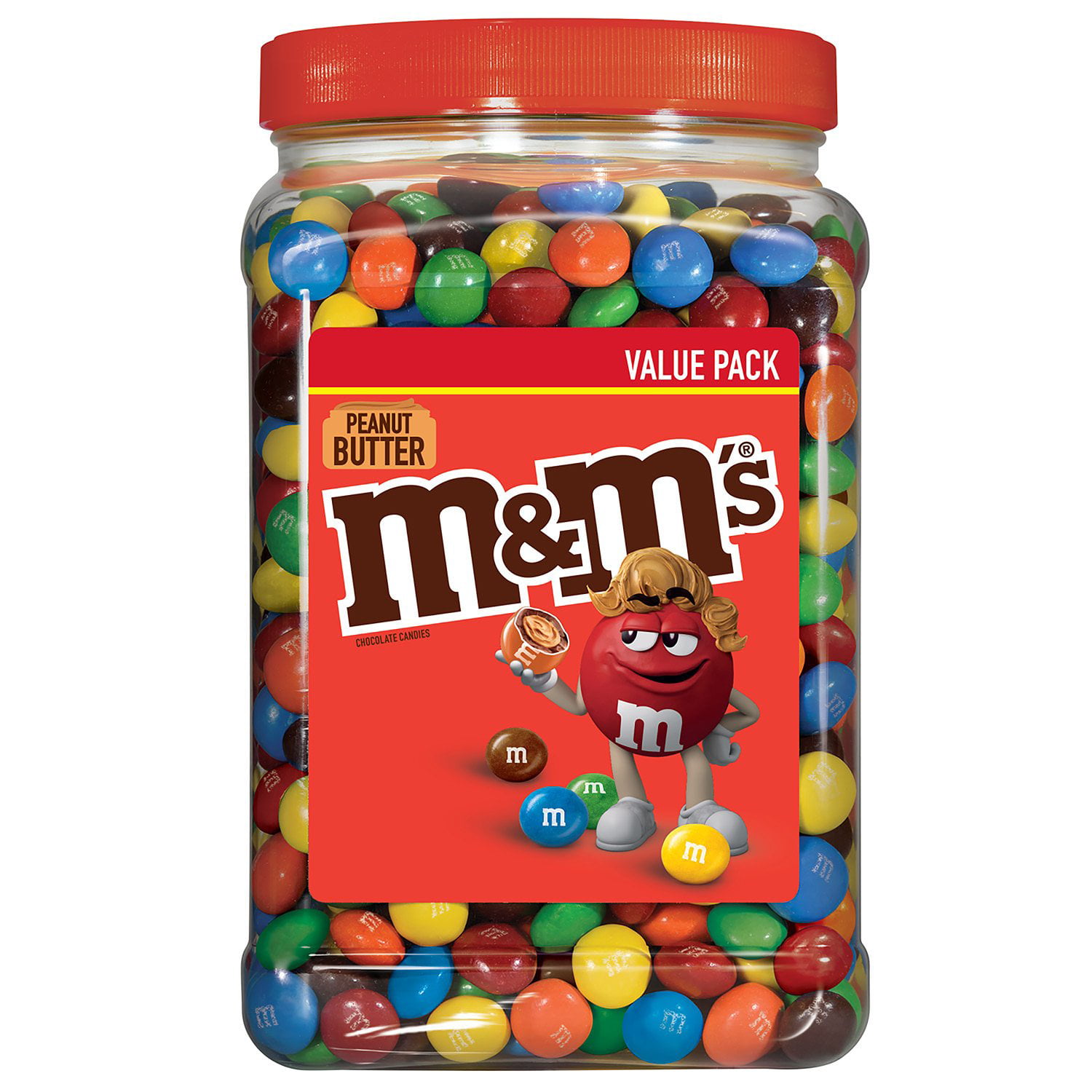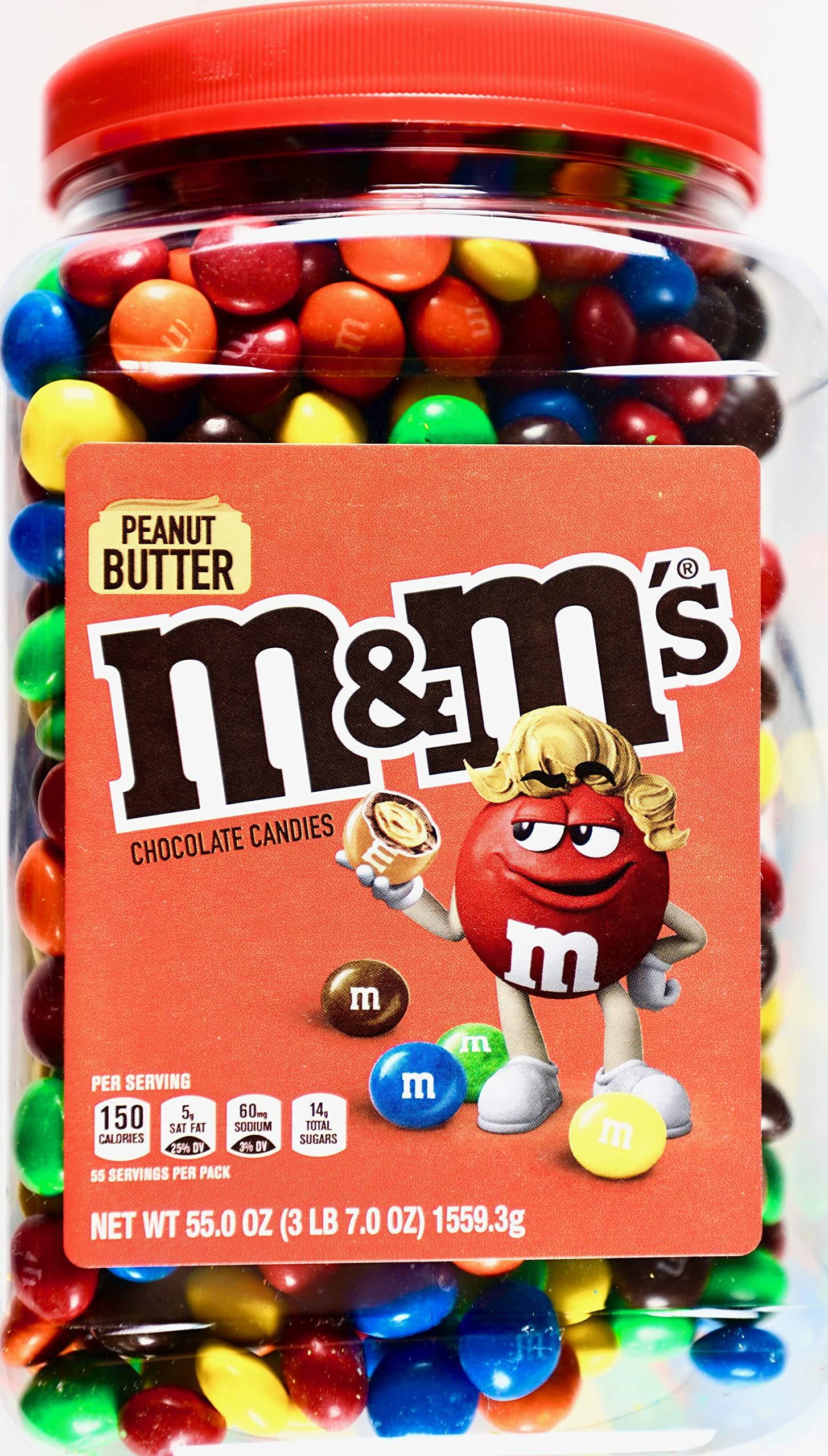Peanut butter M&M's have captured the hearts of candy enthusiasts worldwide, offering a perfect blend of creamy peanut butter, rich milk chocolate, and a crunchy candy shell. These bite-sized delights have become a staple in snack aisles and a favorite treat for those seeking a balance of sweet and savory flavors. Whether you're a long-time fan or just discovering these colorful candies, there's no denying their universal appeal.
From their humble beginnings to their rise as one of the most popular candy variations, peanut butter M&M's hold a fascinating place in the history of confectionery. They're more than just a snack—they're a symbol of innovation in the candy industry, combining timeless ingredients in a way that feels fresh and exciting. Their unique texture and flavor profile have made them a go-to treat for people of all ages and cultures.
In this comprehensive guide, we'll dive into the origins, ingredients, production process, and nutritional aspects of peanut butter M&M's. We'll also explore their cultural significance, fun facts, and creative ways to enjoy them. Whether you're curious about their history or looking for new ways to incorporate them into recipes, this article has everything you need to satisfy your curiosity—and your sweet tooth.
Read also:All About Tim Lambesis Wife Personal Life Relationships And More
Table of Contents
- History and Origins of Peanut Butter M&M's
- Ingredients and Nutritional Information
- The Production Process
- What Makes Peanut Butter M&M's Special?
- Comparison to Other M&M's Varieties
- Creative Ways to Enjoy Peanut Butter M&M's
- Cultural Impact and Popularity
- Fun Facts About Peanut Butter M&M's
- Storage and Shelf Life
- Are They Allergy-Friendly?
- Homemade Versions of Peanut Butter M&M's
- Marketing and Advertising of Peanut Butter M&M's
- Frequently Asked Questions
- Conclusion
History and Origins of Peanut Butter M&M's
Peanut butter M&M's were first introduced in 1989 as a response to the growing popularity of peanut butter-flavored snacks. The Mars Wrigley Confectionery company, already famous for its classic M&M's, decided to expand its product line by incorporating this beloved flavor into their iconic candy. The launch was an instant success, and peanut butter M&M's quickly became a fan favorite.
The concept behind peanut butter M&M's was simple yet groundbreaking: take the traditional M&M's formula and replace the solid chocolate center with a creamy peanut butter filling. This innovation not only added a new dimension to the candy's flavor but also set it apart from other peanut butter chocolates on the market. The combination of creamy peanut butter, milk chocolate, and a crunchy shell offered a unique sensory experience that appealed to a wide audience.
Over the years, peanut butter M&M's have maintained their popularity, thanks in part to clever marketing campaigns and a loyal customer base. They have become a staple in many households and are often featured in recipes, holiday treats, and snack mixes. Their enduring appeal is a testament to the timeless allure of peanut butter and chocolate—a pairing that never goes out of style.
Ingredients and Nutritional Information
Understanding what goes into peanut butter M&M's is key to appreciating their flavor and texture. The main ingredients include sugar, peanuts, milk chocolate, corn syrup, and a variety of food colorings for the candy shell. Each component plays a crucial role in creating the perfect balance of taste and texture.
From a nutritional standpoint, peanut butter M&M's are a treat best enjoyed in moderation. A typical serving size of 1.63 ounces (or about 47 grams) contains approximately 240 calories, 13 grams of fat, 27 grams of carbohydrates, and 4 grams of protein. While they are not a health food, they do provide a small amount of protein and fiber, thanks to the peanuts and peanut butter.
For those with dietary restrictions, it's important to note that peanut butter M&M's contain peanuts, milk, and soy, making them unsuitable for individuals with allergies to these ingredients. They are also not vegan-friendly due to the presence of milk chocolate. However, they are gluten-free, making them a safe option for those with gluten sensitivities or celiac disease.
Read also:Chris Brown And Diddy A Dynamic Duo In Music And Entertainment
The Production Process
The journey of a peanut butter M&M begins with the careful selection of high-quality ingredients. The peanuts are roasted to perfection before being ground into a smooth peanut butter filling. This filling is then encased in a layer of milk chocolate, which adds richness and depth to the flavor.
Next, the chocolate-coated peanut butter centers are coated with a thin layer of sugar syrup. This step creates the iconic crunchy shell that M&M's are known for. The candies are then tumbled in large drums to ensure an even coating and polished to achieve their characteristic shine. Finally, they are sorted by color and packaged for distribution.
The entire production process is a marvel of modern confectionery engineering, combining precision and creativity to produce a consistently delicious product. It's a testament to the expertise and innovation of Mars Wrigley, whose commitment to quality has made peanut butter M&M's a beloved treat worldwide.
What Makes Peanut Butter M&M's Special?
Peanut butter M&M's stand out for several reasons. First and foremost is their unique flavor profile, which combines the creaminess of peanut butter with the sweetness of milk chocolate and the crunch of the candy shell. This combination creates a multi-sensory experience that is both satisfying and addictive.
Another factor that sets peanut butter M&M's apart is their versatility. They can be enjoyed on their own, used as a topping for desserts, or incorporated into recipes for cookies, brownies, and more. Their vibrant colors also make them a popular choice for party favors, holiday decorations, and themed treats.
Finally, peanut butter M&M's have a nostalgic appeal that resonates with people of all ages. For many, they evoke fond memories of childhood and family gatherings, making them more than just a candy—they're a source of joy and connection.
Comparison to Other M&M's Varieties
While all M&M's share the same basic structure—a candy shell encasing a flavorful center—each variety offers a unique taste experience. Classic M&M's feature a solid milk chocolate center, while peanut M&M's have a whole peanut at their core. Other popular variations include crispy, pretzel, and caramel M&M's, each with its own distinct texture and flavor.
Peanut butter M&M's are often compared to peanut M&M's, as both feature peanuts as a key ingredient. However, the two are quite different: peanut M&M's have a crunchy whole peanut center, while peanut butter M&M's have a creamy peanut butter filling. This difference in texture and flavor makes peanut butter M&M's a favorite among those who prefer a smoother, creamier bite.
In terms of popularity, peanut butter M&M's rank among the top-selling varieties, alongside classic and peanut M&M's. Their unique flavor and versatility have earned them a dedicated fan base and a permanent spot in the M&M's lineup.
... (Continue with other headings and subheadings as per the outline)

